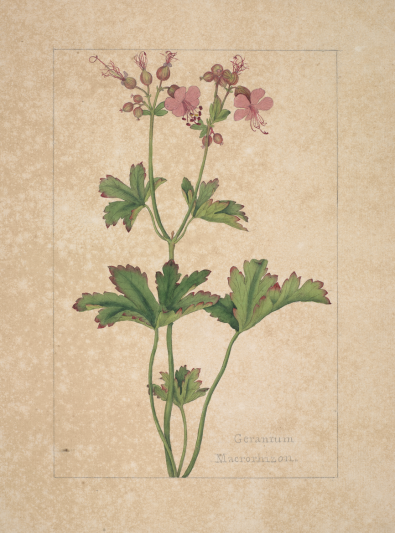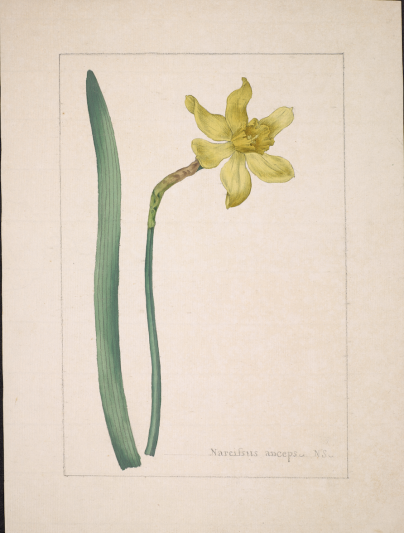Lynn Parker, Curator, Illustrations & Artefacts, writes: The Library and Archives at Royal Botanic Gardens, Kew are grateful to FNL for supporting the acquisition of this group of watercolours from the collection of the English botanist, William Curtis (1746-1799). Thirteen were bought with a full grant from FNL, 13 having previously been bought at the Catherine Southon Auctioneers’ auction on 16 November.
William Curtis was born in the village of Alton, Hampshire in 1749, into a Quaker family. By the time Curtis was apprenticed to his grandfather’s apothecary business at the age of 14, he had developed a keen interest in natural history. As a fully qualified apothecary, William moved to London to set up his own practice, which he sold in 1771, using the proceeds to buy a half-acre plot of land in Lambeth to set up a physic garden, cultivating native plants.
By 1773 Curtis was engaged as Demonstrator of Plants and Praefectus Horti (Superintendent of the Garden) at the Chelsea Physic Garden. Although he enjoyed overseeing the Garden, a portion of his job involved organising the donation of 50 new specimens each year to the Royal Society, a task he found rather arduous. He left in 1777 to spend time working on a publication that would become the Flora Londonensis. The publication described the flora found in mid-18th century London and its environs, but despite receiving universal acclaim only 300 copies were produced. The scale and quality of the volume made it expensive to produce, and with a purchase price of £500, Curtis could not recover his costs. He only recuperated his finances when he published the smaller Botanical Magazine. Founded by Curtis in 1787 it is the longest-running botanical periodical featuring colour illustrations of plants. In contrast to Flora Londinensis, its sales topped 3000 per issue, and cost just 1 shilling.
In the 180-year history of the Royal Botanic Gardens, Kew, this publication has played an extremely important role in helping to build and shape its Illustration Collections. We are indebted to William Jackson Hooker for beginning The Magazine’s long association with Kew; he was editing it in 1841, when he became Kew’s first Director. Many talented and respected botanical illustrators have contributed to The Magazine over the past 232 years, and most of the drawings that were the basis for its plates are held at Kew.
The provenance of the illustrations made possible by the FNL’s grant, can be traced back to Curtis’s own collection, which makes them an unusual and exciting acquisition. Containing material attributed to Sydenham Edwards and other, currently unidentified, artists, they are very much in the stylistic paradigm adopted by The Magazine. The illustrations fit its 8vo format, a size that contributed greatly to its accessibility and affordability. While little is currently known about the identities of the artists, their contextualisation in the Kew Collection will allow them to be understood in the wider category of English botanical drawing in the late 18th and early 19th centuries. Additionally, they will advance our understanding of William Curtis as a collector of illustrations, and a disseminator of plant knowledge during this period of scientific enlightenment.

